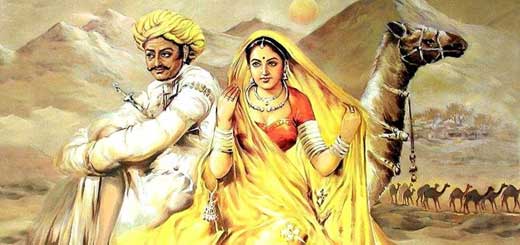
BY 6
Under the patronage of the kings that ruled Rajasthan, different types of arts and crafts flourished in the state. The different painting styles that evolved in the region are briefly described below. Miniature Paintings of Rajasthan Gemstone Paintings of Rajasthan Phad Paintings of Rajasthan Kajali Paintings of Kishangarh BaniThani
Mainly related to Mughal art, this style of painting is found to have developed among Indian artists centuries ago. This style underwent some major changes when Mughal rulers stepped into India and brought with them Persian artists who also were experts in miniature paintings. The confluence of these styles gave birth to a distinct style.
The Rajasthani paintings are of very bright colours. Some of these bright colours are due to different coloured gemstones that are ground to fine powders and are used as colours. Both precious and semi-precious stones are used for the purpose.
They are a kind of religious paintings that aredone on long pieces of canvas or scrolls of cloth called phad. They depict the stories of the folk deities of Rajasthan: Devnarayan and Pabuji. These paintings are part of ritualistic dance and song narratives performed by priests and their wives. The tales are of bravery, heroism and courage.
The Kajali painting is a special of piece of art that is done by very few people in this state. These are paintings that use kajal which is coloured black and gem stone colours. The paintings require a lot of expertise and time to complete.
This style involves making romantic miniature paintings of Radha and Krishna. Different painting styles developed in the kingdoms of Mewar, Ambal, Kishangarh, etc., under the royal patronage of the rulers of these kingdoms. Artists in Kishangarhin the 17th century were given facilities and encouraged to develop their style by the rulers Sawant Singh and Raja Mansingh.
These are Kishangarh paintings that depict BaniThani, a graceful woman. This lady was a singer and poet in the court of the King Sawant Singh. The origination of this style is credited to Sawant Singh.
Your email address will not be published. Required fields are marked *
